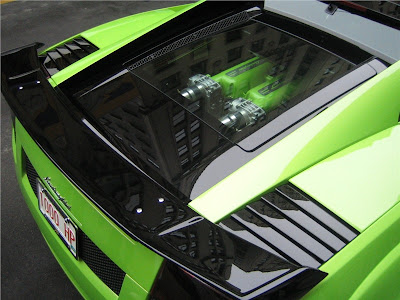 The famous sports car manufacturer, Bugatti Automobiles SAS, a subsidiary of Volkswagen AG, owns the prestigious title for manufacturing the super performer of the world. The name ´Veyron´ is attributed to the French racing driver Pierre Veyron who won the title ´24 hours of Le Mans´ in 1939 for Bugatti. Bugatti, with its long years of experience in making the traditional racing cars since the early ´90s, tries the track in the modern era with a well-advanced version of their technology applied in the Veyron 16.4.Bugatti Veyron is an exclusive sports car for the 21st century. It exemplifies the perfect blending of design with technological concept.
The famous sports car manufacturer, Bugatti Automobiles SAS, a subsidiary of Volkswagen AG, owns the prestigious title for manufacturing the super performer of the world. The name ´Veyron´ is attributed to the French racing driver Pierre Veyron who won the title ´24 hours of Le Mans´ in 1939 for Bugatti. Bugatti, with its long years of experience in making the traditional racing cars since the early ´90s, tries the track in the modern era with a well-advanced version of their technology applied in the Veyron 16.4.Bugatti Veyron is an exclusive sports car for the 21st century. It exemplifies the perfect blending of design with technological concept.In this new section we will see about extreme machines ever developed by human being.
As of now this cars may be for our eyes only due to their hefty price tag (please look at the price after completing the post), but these extreme machines are considered as Ideal ones and helps in designing next generation cars. This kind of machines pricks the mind of the manufacturers to produce incredible machines. Here is one such extreme machine called Bugatti Veyron 16.4 – the fastest, most powerful, most expensive production car in the history of the automotive industry.
Bugatti Veyron 16.4 has the luxury of a Rolls-Royce, the performance of a Formula One car, and the drivability of a Honda. It’s a combination that leaves the Mercedes-Benz SLR McLaren, the Ferrari Enzo, and other wannabes in the dust
As of now this cars may be for our eyes only due to their hefty price tag (please look at the price after completing the post), but these extreme machines are considered as Ideal ones and helps in designing next generation cars. This kind of machines pricks the mind of the manufacturers to produce incredible machines. Here is one such extreme machine called Bugatti Veyron 16.4 – the fastest, most powerful, most expensive production car in the history of the automotive industry.
Bugatti Veyron 16.4 has the luxury of a Rolls-Royce, the performance of a Formula One car, and the drivability of a Honda. It’s a combination that leaves the Mercedes-Benz SLR McLaren, the Ferrari Enzo, and other wannabes in the dust
Its 8.0-liter 16-cylinder engine has four turbochargers and produces 740 kilowatts (1001 metric horsepower, or 987 hp). And you want torque? How does 1250 newton-meters sound? The car reaches 100 km/h in 2.5 seconds from a standing start, and 300 km/h in 16.7 seconds. It has a top speed of 408 km/h..
The structure is made of carbon fiber and aluminum. The brakes are carbon ceramic, and the exhaust system is titanium. There are 10 radiators to dissipate the engine’s heat. To keep the car on the ground when its winglike shape develops lift at high speeds, there are front and rear air diffusers and a massive rear spoiler that deploys electronically to generate a drag force of 0.6 times the force of gravity. Ride height varies with speed from 125 to 66 mm.
To go beyond 375 km/h (233 mph), the driver must stop the car, insert a special key, and go through a checklist (”Seatbelts, check; oil, check; last will and testament, check”). At top speed, the Veyron runs through a full tank of gas in 12 minutes, for a fuel economy measured in gallons per mile. The U.S. Environmental Protection Agency (EPA) rates it at 3.846kpl and 7.692kpl in normal city and highway cycles. In average for a kilometer Bugatti Veyron 16.4 needs Rs186. Presumably, though, mileage won’t be a factor in anyone’s purchase of this vehicle, ever. From 400 km/h, the car can stop in 10 seconds, covering more than a kilometer while doing so.
In the rarefied world of the supercar, so-called volume production is measured in hundreds, sometimes just dozens of cars. By that standard, the 300 examples of the Veyron 16.4 that Bugatti Automobiles SAS, of Molsheim, France, expects to build—50 per year—qualify it as a volume car.
In the rarefied world of the supercar, so-called volume production is measured in hundreds, sometimes just dozens of cars. By that standard, the 300 examples of the Veyron 16.4 that Bugatti Automobiles SAS, of Molsheim, France, expects to build—50 per year—qualify it as a volume car.
Bugatti built just 7000 cars between 1909 and 1956, from Grand Prix winners to the legendary Royale ultraluxury car. It seems the greatest of ironies that the storied French marque was revived by Volkswagen, parent company of Skoda and Audi. A pet project of former chairman Ferdinand Piëch, the development of the Veyron took eight years. Industry analysts don’t expect the company to recoup its investment.
But what a glorious piece of engineering it is. Volkswagen should be proud. Perhaps even Ettore Bugatti, a man of immense flamboyance, ego, and engineering genius, would be pleased.










No comments:
Post a Comment